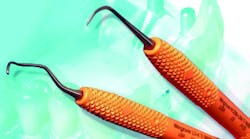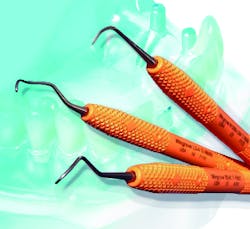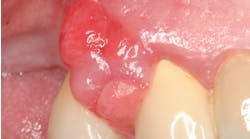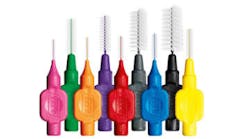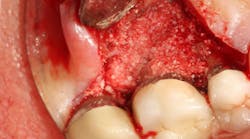Dental implant maintenance: So many recommendations, but which one is right?
As dental clinicians, how does one choose from among the many options available which dental implant maintenance techniques to use and what evidence-based research to believe? Likewise, which is the best protocol for implant therapy? Michelle Strange, RDH, MSDH, explains how she sorts through the enormous amounts of information.
As dental clinicians, we have a responsibility to get through each day doing what's right for our patients and practicing the best standard of care we can. While that sounds ideal, we all know that sometimes it's a struggle. We learn these best practices in dentistry in a variety of ways—by reading articles, attending meetings, continuing education courses, and having conversations with colleagues—but how do we choose from the many options WHO TO LISTEN TO, WHICH DENTAL IMPLANT MAINTENANCE TECHNIQUES TO USE, and WHAT EVIDENCE-BASED RESEARCH TO BELIEVE? How do we know WHICH IS THE BEST PROTOCOL FOR IMPLANT THERAPY? With so many recommendations, IS THERE A WAY TO KNOW WHICH ONE IS RIGHT?
Before I transitioned my career into teaching, speaking, and the world of writing, I attempted to keep up with research as often as I could. The reality was that although I did my best, I was always just a little behind. Now, I spend my weeks attending continuing education courses, reading research, and writing. The quote “The more you know, the more you know you don't know” pretty much sums up how I feel at the end of the week. Depending on which area of the country I am in, the type of journal I am reading, or who is on the podium lecturing could offer very conflicting perspectives on the way to practice dental hygiene.
In the back of my mind, I have to remember that the approach of evidence-based dentistry is to integrate systematic assessments of scientific evidence with clinical expertise. (1) Yet, this is difficult when research studies give contradicting information. Add anecdotal recommendations into the mix that come from the viewpoint of the author or speaker, and it is enough to make your head spin when you are searching for the best protocol.
Recently, a Facebook post on implant maintenance generated so many different responses that it made me wonder: The ADA describes a dental standard as a way to ensure we are all on the same page, (2) so how can none of these comments be the same? About 20 comments into the thread, it was obvious that we were not all on the same page regarding how to maintain dental implants in the office. Some people were quoting research articles, some quoted speakers that they had heard on the podium, and some quoted what their dentists instruct them to do.
Research does give some conflicting data until you critically appraise it to determine its validity and clinical significance. Sadly, however, many clinical practitioners don’t know how to do this. If the conclusion states that titanium instruments scratch the implant, then they will accept that at face value. Never mind that the research doesn't also look at stainless steel instruments that have been shown to gouge the implant surface significantly more. (3).
There needs to be more definitive research on how to maintain dental implants in a healthy and diseased state. (4-5) The variables that go into implant maintenance are mind-boggling: proper placement of the implant by the doctor, placement at bone or tissue height, how well the implant was restored, what type of prosthetic we are maintaining, the implant type and its proprietary design, whether it is healthy or diseased, and if we are cleaning the implant body or the implant components. The list can go on and on, so I understand where the research might get confusing.
I have become quite jaded in the last few years with speakers who treat their time at the podium like a pulpit—hearing one speaker tell me to probe an implant followed directly by another saying not to, both lecturing as if their view is the only way to treat implant patients, neither quoting any research studies nor explaining what the correct protocol is for implant assessment. If you are wondering, yes, probing is important, but it is only a portion of the puzzle when assessing dental implants.
I was especially frustrated after hearing of one well-known periodontist having a discussion after his lecture in which he said he can say anything to hygienists because we don't know any better. And there are other speakers who, when asked to give a presentation to a group of hygienists, just cut down their presentations that are geared toward doctors and hope they get by as adequate enough for what we hygienists do in our day-to-day clinical practices.
On the flip side, I leave lectures where the doctors preach for hygienists to know their worth and understand best practices, because, after all, we are the long-term maintainers of these dental implants. So, what is a hygienist to believe?
I think it comes down to doing our due diligence in the research. It is so easy to quote an article on Facebook and just accept the current protocol, but have we read the references that it cited? Did we appraise the research and search to see if there was more current research? Not usually, because—as I mentioned earlier in the article—it is difficult to be a clinician and keep up with current research.
If you think about it, we spend an entire semester learning about the anatomy of teeth, but what training have we received on this implant medical device that has been placed in a patient’s jawbone? There are entire weekend courses spanning months that are dedicated to the placement and restoration of dental implants. What about the courses on implant maintenance in the office or at-home care, or even those simply offering a better understanding of implant anatomy and the types of implants on the market today? It is no wonder that we are not on the same page in our understanding of the best care of dental implants.
When it comes down to implant maintenance, I believe the days of differing opinions with regard to the type of instruments we use will soon be a moot point. If we are attempting biofilm management on an implant without calculus or cement, this is best done via air polishing with glycine powder. (6-7) This would work in a healthy situation and when peri-implantitis has exposed the implant threads and roughed implant surface, eliminating fear of scratching the surface. (8) Most dental offices do not have this device, and this needs to change. For biofilm reduction around implants and natural teeth, it is a fantastic tool.
In the presence of calculus, biofilm removal around an implant is easier and doesn’t require the same amount of pressure as used for a natural tooth. (9) Air polishing with glycine powder does not remove calculus. However, I would not pick up my everyday scaler that I use for a natural tooth. I try to practice under the principle that an implant is not a natural tooth. I do not treat implants as natural teeth in my home-care recommendations or in my in-office maintenance procedures. I believe that there are simply too many variables involved to say that the stainless steel isn’t causing damage, leaving behind metal ions (3) or residue that would later create a complication, looking not just after one-time use, but after many years of implant maintenance. (7) Practicing under the precautionary principle if the effects of a product or action are unknown, especially for long-term use on the patient, don’t use it has prohibited me from picking up my stainless-steel scalers. Not to mention, certain companies have put a lot of thought into the instrument design of curettes specific to implants, so typically curettes will give me better angulation than a scaler designed for natural teeth. Surgeons don’t extract implants with the same instruments they use to extract natural teeth, so why would we use our instruments for natural dentition to maintain implants?
It may be many years before we are clear on the best ways to assess and maintain dental implants. Until then, if we in the hygiene profession are to be the ones to maintain these medical devices for the long term, being clear on the types of implants that are being placed, how they are placed, implant vocabulary, in-office protocols, and at-home protocols will be all-important for the everyday hygienist to understand. Of course, this becomes difficult when we aren’t allotted enough time for patients, are told not to arrive early at the dental office to review charts, and are not encouraged to obtain CE credits on a regular basis.
With regard to the best protocol for dental implant therapy, how do we decide? I can say right now that Facebook should not be your only source of information. If you hear a presenter at a meeting or CE course say something that goes against what you have heard in the past, ask questions. Look up the references when you read articles. Keep in mind that there will always be conflicting information; sometimes it depends on how we can apply that information in our clinical settings and to our particular cases. Each case will be different, and sometimes that case will require a different protocol. As licensed professionals, we must be as educated as possible for the sake of our patients and the longevity of their medical devices. The ethics of our profession depends on it.
References
1. Frantsve-Hawley J. Evidence-based dentistry for the dental hygienist. Hanover Park, IL: Quintessence Publishing Co.; 2014.
2. Kott K. Evidence-based decision making.Dimensions of Dental Hygiene. 2015;13(4):69-72.
3. Hasturk H, Nguyen DH, Sherzai H, et al. Comparison of the impact of scaler material composition on polished titanium implant abutment surfaces. J Dent Hyg. 2013;87(4):200-211.
4. Schmage P, Kahili F, Nergiz I, Scorziello TM, Platzer U, Pfeiffer P. Cleaning effectiveness of implant prophylaxis instruments. Int J Oral Maxillofac Implants. 2014;29(2):331-337.doi: 10.11607/jomi.2524.
5. Armitage GC, Xenoudi P. Post‐treatment supportive care for the natural dentition anddental implants. Periodontol 2000. 2016;71(1):164-184.doi:10.1111/prd.12122.
6. Lupi SM, Granati M, Butera A, Collesano V, Rodriguez Y, Baena R. Air‐abrasive debridement with glycine powder versus manual debridement and chlorhexidine administration for the maintenance of peri‐implant health status: a six‐month randomized clinical trial. Int J Dent Hyg. 2017;15(4):287-294. doi: 10.1111/idh.12206.
7. Louropoulou A. Prevention and treatment of peri-implant diseases: cleaning of titanium dental implant surfaces. Ned Tijdschr Tandheelkd. 2017;124(9):451-453. doi: 10.5177/ntvt.2017.09.17161.
8. Ronay V, Merlini A, Attin T, Schmidlin PR, Sahrmann P. In vitro cleaning potential of three implant debridement methods. Simulation of the non‐surgical approach. Clin Oral Implants Res. 2017;28(2):151-155. doi: 10.1111/clr.12773.
9. Gulati M, Govila V, Anand V, Anand B. Implant maintenance: a clinical update. Int Sch Res Notices. 2014;14:908534. doi: 10.1155/2014/908534.
